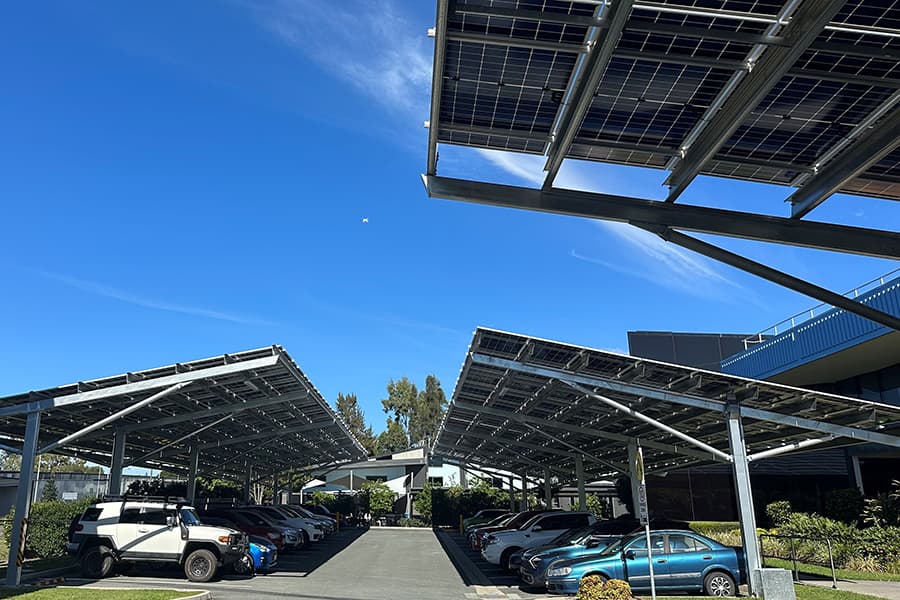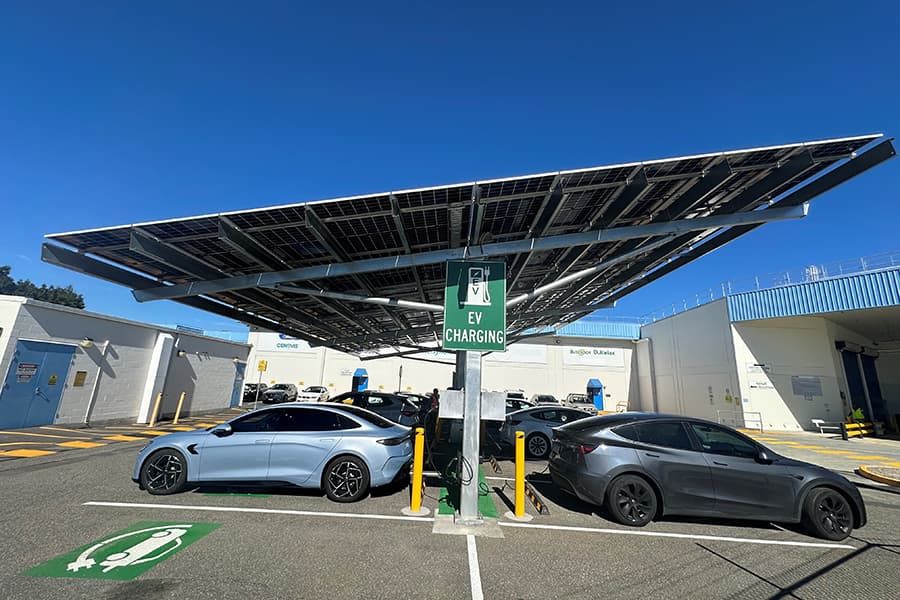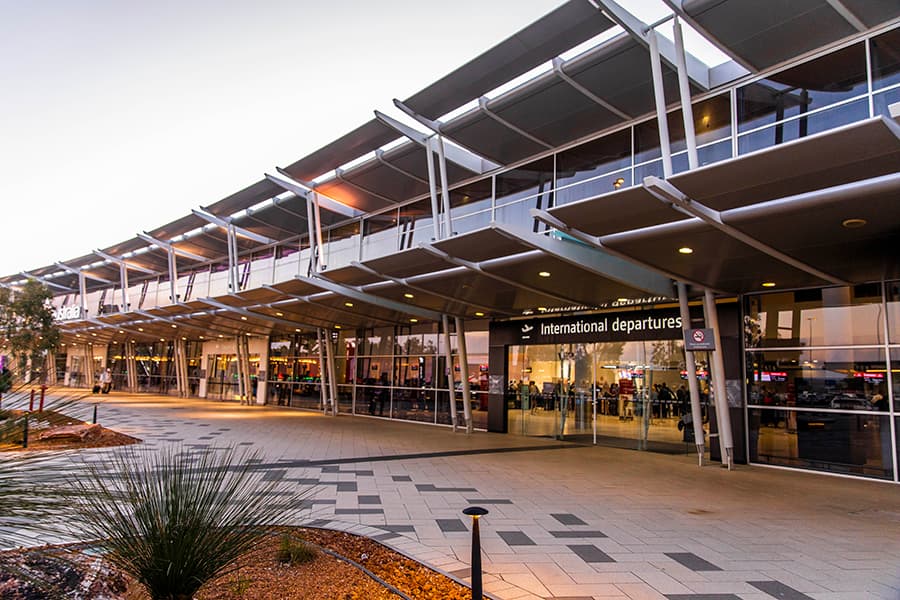Solar car parks have been present in Australia for about a decade, but it is only in the past year that their popularity has truly surged. This recent growth can be attributed to a variety of factors, each contributing to the increased adoption of these green energy-generating structures.
One significant driver of this surge is the rising demand for electric vehicle (EV) chargers. As more people switch to electric vehicles, the need for convenient and efficient charging solutions has grown. Solar car parks provide a logical solution by generating solar energy on-site, which can then be used directly to charge EVs. Further generation of power onsite reduces the need for expensive transformer upgrades and increases in peak site demands and thus charges. This not only makes the charging process more sustainable but also more cost-effective for site owners and users.
“EV chargers integrated into our structures provide a seamless way to move to the future of personal transport and make your centre a destination to spend time at while charging,” said Daniel Chapman of Solar Car Parks.
In addition to the demand for EV chargers, another major reason for the increased interest in solar car parks is the realisation by many organisations that their existing rooftop solar installations are no longer sufficient to meet their energy needs. Whether these organisations are private companies, government bodies, or public sites, many have already maximised their rooftop solar capacity. However, the demand for solar power continues to grow, driven by both ESG goals and financial incentives. Car parks, with their large, open spaces, offer an ideal solution for additional solar installations.
Capestone Village, located in the growing area of Northern Brisbane, is one shopping centre that has adopted solar car parks. Sam Vecchio, the developer and operator of the centre, initially integrated rooftop solar into the design. Impressed by the positive results of the solar generation, he decided to expand the solar capacity by utilising the car park. This addition nearly doubled the solar system’s capacity, and the shaded parking has been well-received by customers and tenants.
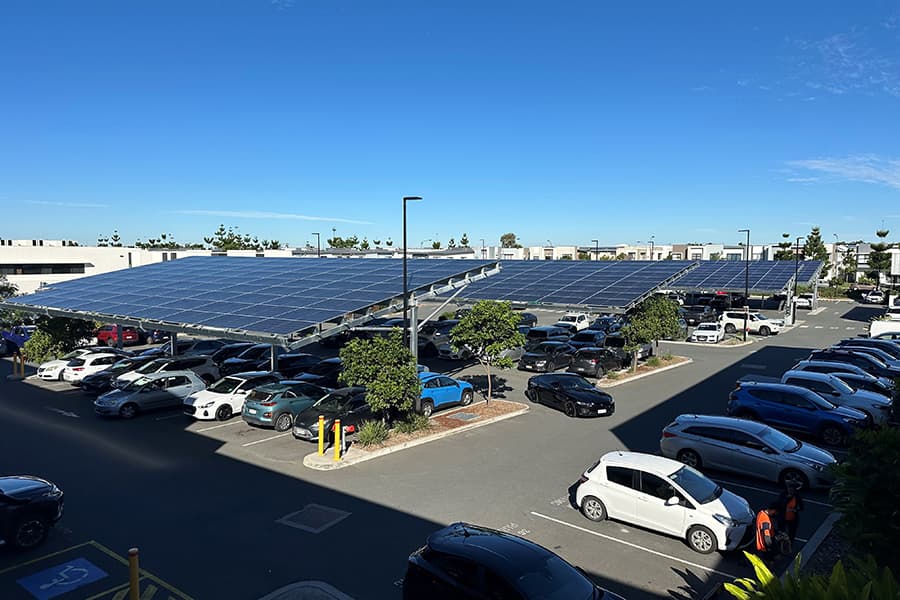
Capestone Village
“By creating a cooler place to park and reducing our reliance on grid electricity, we have fostered a green environment that resonates with our clients and keeps them returning to spend in our centre,” said Vecchio.
In late 2022, France legislated that by 2030 all car parks with more than 80 car parking spaces must have 50% covered by solar arrays. This forward-thinking mandate was created after reviews determined the demand for clean energy being created in urban areas would grow over the next 20 years and these open spaces created a magnificent opportunity to create this clean energy.*
Solar car parks provide multiple benefits beyond just generating clean energy. One of the most appreciated advantages is the shade they provide for parked vehicles. This shading not only protects cars from the sun’s harsh rays, reducing interior temperatures and improving comfort for drivers and passengers, but also helps to extend the lifespan of the vehicles by protecting them from UV damage. Additionally, the shaded areas can contribute to a reduction in the heat island effect, helping to keep the surrounding environment cooler.
Another often overlooked benefit of solar car parks is their potential for water collection. The panels can be designed to direct rainwater into collection systems, providing a valuable resource for irrigation or other uses on the property. This integration of solar power generation and water management further enhances the sustainability of the site.
The largest solar car park in Australia has been established at a Vicinity Centres site in South Australia, showcasing the potential of large-scale onsite solar installations.
This achievement includes a substantial rooftop array and a 3.2MW capacity solar car park, which covers more than 1,100 car spaces at their Elizabeth Shopping Centre. In addition to this, the installation incorporates a sizeable battery. The total system contributes to more than a 30% reduction of the centre’s energy requirements via their embedded network.
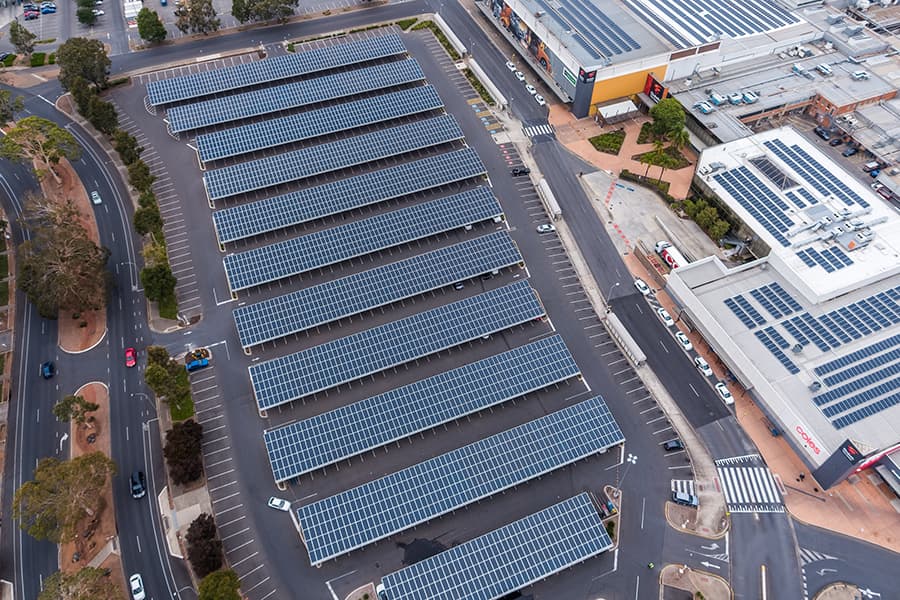
Elizabeth Shopping Centre, SA. Image: Vicinity Centres
The combination of these benefits has led to a significant increase in the recognition of solar car parks as a viable and attractive option for many types of properties.
The sustainability benefits, coupled with the financial incentives such as reduced energy costs and potential revenue from EV charging, make solar car parks a smart investment.
They represent a multifaceted approach to sustainability, offering clean energy, vehicle protection, and resource management, all of which contribute to their growing popularity and widespread adoption across Australia.
*source: Forbes

To enquire about the profitability of solar for your car park space, please get in touch with Daniel Chapman for a review:
Daniel Chapman
Solar Car Parks
E: daniel@solarcarparks.com.au
M: 0488 55 44 24


